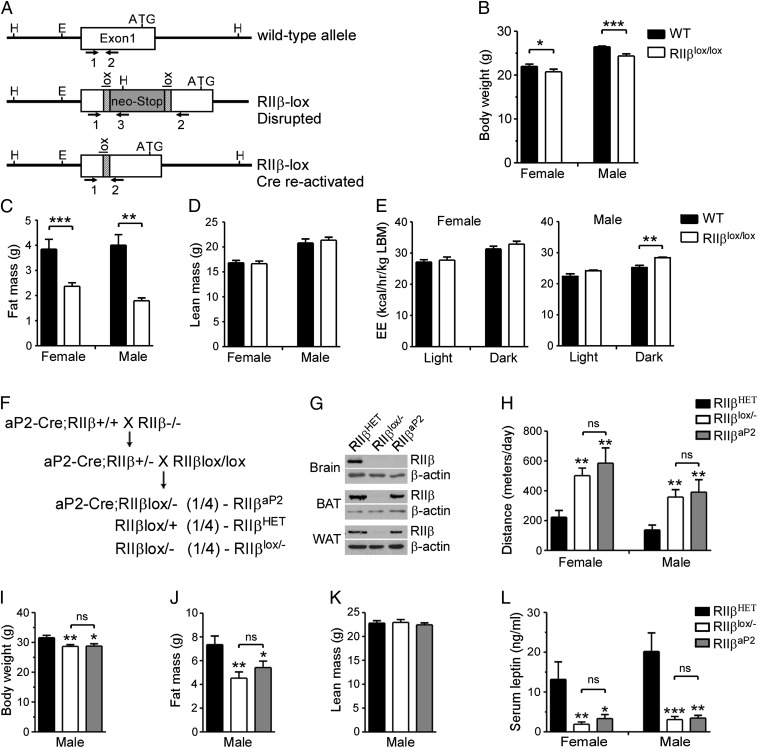Fig. 1.
Generation and characterization of RIIβlox/lox mice and mice with adipocyte-specific RIIβ expression. (A) Strategy for generation of RIIβlox/lox mice. (B) Body weight and (C) QMR analysis of fat mass and (D) lean mass of RIIβlox/lox and WT control mice at 12 wk of age. (E) EE of WT and RIIβlox/lox mice was measured over 2 d and averaged and normalized to LBM. For both sexes, n = 8 for each genotype; values represent mean ± SEM. **P < 0.01. (F) Breeding strategy for generation of aP2-Cre mice with adipocyte-specific RIIβ reexpression (RIIβaP2). (G) Western blots for RIIβ in lysates from BAT, WAT, and brain of RIIβaP2 mice. β-actin was used as loading control. (H) The 72-h total locomotor activity in HET, RIIβlox/−, and RIIβaP2 mice (n = 5–8 for each group). (I–K) Body weight (I), QMR measurements of fat mass (J), and lean mass (K) of male HET (n = 16), RIIβlox/− (n = 14), and RIIβaP2 (n = 10) mice. (L) Serum leptin levels of male and female HET, RIIβlox/−, and RIIβaP2 mice at 20–22 wk of age (n = 6–14 for each group). Values represent mean ± SEM. ns, not significant. **P < 0.01; ***P < 0.001 compared with HET.

